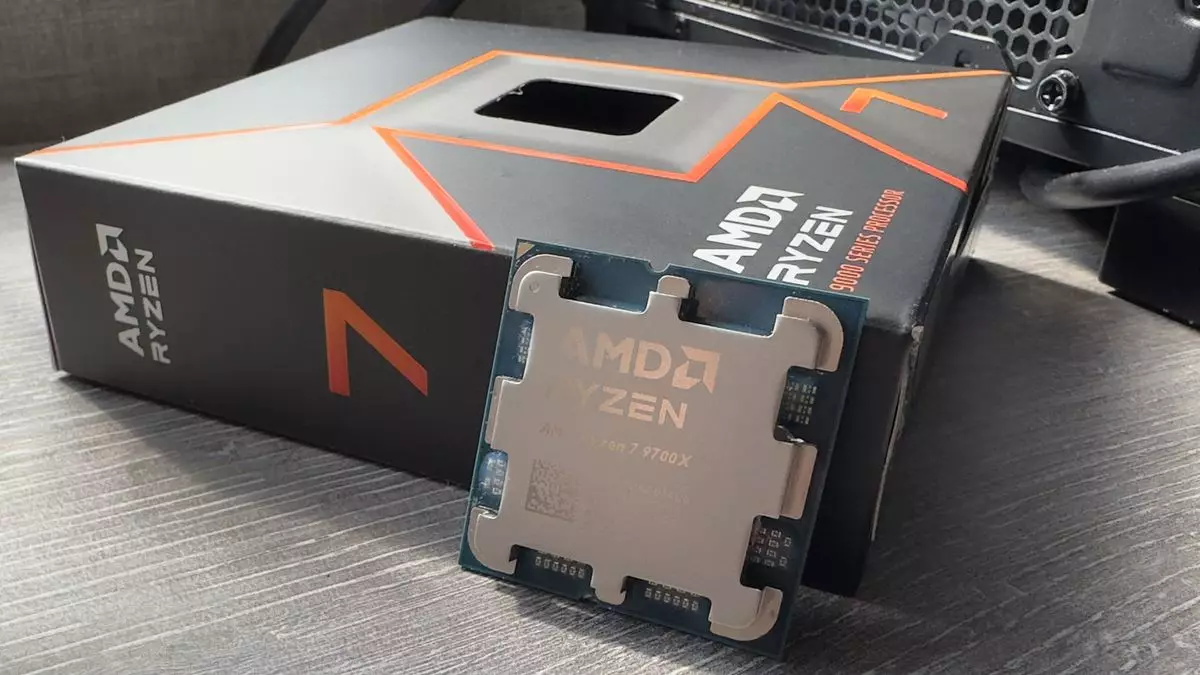As the landscape of semiconductor fabrication continues to evolve, AMD’s recent decision to manufacture portions of its Ryzen 9000-series desktop CPUs at TSMC’s newly established facility in Arizona marks a significant shift in the industry. The news, reported by journalist Tim Culp, underscores a momentous development for both AMD and TSMC, the leading semiconductor manufacturer. This article delves deeply into the implications of this decision, its profitability prospects, and the broader context of chip manufacturing in the United States.
AMD has long been recognized for its innovative approaches to chip design and production, but the move to have Ryzen 9000 CPUs partially manufactured in Arizona suggests a strong commitment to domestic capabilities. The Ryzen 9000 processors, which feature cutting-edge 4nm silicon technology, have been noted for their impressive performance. Initially produced in Taiwan, the shift to U.S. fabrication demonstrates AMD’s confidence in the capabilities of TSMC’s new Arizona fabrication facility. This transition reflects not just a logistical decision but a broader strategy to strengthen the domestic semiconductor supply chain.
However, the decision also opens the door to critical financial considerations. TSMC has publicly acknowledged that the cost of manufacturing chips in Arizona exceeds that in its Taiwan facilities—an assertion that raises questions about the overall competitiveness of U.S.-made chips. While the benefits of local manufacturing, such as reduced shipping times and potential tariff avoidance, are attractive, they must be weighed against the increased production costs that could ultimately be passed onto consumers.
The technical intricacies surrounding the production of the Ryzen 9000 CPUs cannot be understated. While some components of the CPU are manufactured in Arizona, others—like the 6nm I/O die that coordinates memory and other functionalities—are still produced in Taiwan. This segmentation of production complicates the narrative of “American-made” chips, emphasizing that the designation encompasses multiple elements and manufacturing locations. Consequently, even if the CPU cores are developed domestically, the final product may not be entirely produced within U.S. borders, leading to a broader discussion about defining “American-made” in a global supply chain.
The landscape becomes even murkier when factoring in the various semiconductor nodes employed by TSMC. The facilities in Arizona are set to gradually ramp up production from the 4nm node utilized for Ryzen 9000 up to the advanced 3nm and eventually 2nm nodes. However, TSMC has reiterated its intention to reserve its cutting-edge technology for its Taiwanese fabs initially. This strategic decision limits access to some of the latest semiconductor advancements for domestic production and highlights a dichotomy in technology transfer that may take years to resolve.
AMD’s move comes amid a larger trend toward localization in semiconductor manufacturing. Companies are increasingly seeking to establish production capabilities closer to home, driven by concerns over supply chain vulnerabilities magnified by global events. The ongoing chip shortage and geopolitical tensions have spotlighted the necessity for companies to reassess their sourcing strategies and consider more resilient alternatives.
Furthermore, the competitive landscape is continuously shifting. By creating a footprint in Arizona, AMD not only diversifies its supply chain but also directly impacts market dynamics in the semiconductor industry. The presence of TSMC in the U.S. provides AMD a strategic edge over competitors reliant on offshore production, especially if domestic manufacturing can mitigate risks associated with logistical delays and international trade barriers.
Nevertheless, industry observers must remain cautious. The interplay of rising production costs in the U.S. against market demand for competitively priced products will test how companies like AMD navigate their positioning. The ultimate success of the Arizona fabrication plant will hinge on balancing these costs while maintaining performance and cost-effectiveness in their products.
AMD’s commitment to utilizing TSMC’s Arizona facility for the Ryzen 9000 CPUs signals a positive step toward domestic semiconductor production. However, the path ahead is fraught with challenges ranging from technological complexities to financial viability. Over the coming years, as new fabs come online and production nodes advance, the industry will need to closely monitor how these elements intertwine.
The decision to produce CPUs domestically has broader implications not just for AMD and TSMC but for the entirety of the semiconductor ecosystem and its stakeholders. Future developments in this space will undoubtedly influence the strategies of other tech giants as they consider similar moves while navigating the rocky terrains of manufacturing economics and global supply chain management. As we look five years ahead, the realization of a resilient and adaptive semiconductor landscape will ultimately hinge on the choices made today.

